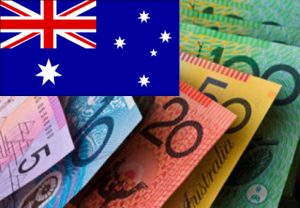Australian Dollar impacted by ore price
21 November 2016 by News DeskAustralian Dollar was left far softer last week allowing a sturdy Sterling to easily advance.
 Australian Dollar was impacted by falling prices of iron ore – Australia’s biggest commodity export – as well as poor Australian employment figures for October.
Australian Dollar was impacted by falling prices of iron ore – Australia’s biggest commodity export – as well as poor Australian employment figures for October.
However, as the US Dollar weakened on Monday, some traders looked to risk-correlated currencies like the Australian Dollar, according to currency specialists TorFX
This allowed the Australian Dollar to recover slightly from its lows on Monday, but its recovery was still light due to remaining downside risks from last week.
New Zealand Dollar (NZD) – The Pound to New Zealand Dollar exchange rate slipped slightly last week as New Zealand Dollar investors attempted to return to the weakened ‘Kiwi’ after its losses.
New Zealand’s southern island was hit by a 7.8 magnitude earthquake at the beginning of the week, which weighed heavily on New Zealand market activity and sentiment towards the beginning of the week, but as the week advanced traders hesitated to allow Sterling to gain much versus the New Zealand Dollar. The volatile GBP/NZD exchange rate slipped once again on Monday due to weakness in the US Dollar strengthening the ‘Kiwi’.
Australian Dollar impacted by ore price
Pound Sterling (GBP) – The Pound trended limply during last week’s trade and by the end of the week had struggled to move far from the week’s opening levels against many currencies.
Sterling continued to perform poorly when markets opened on Monday morning amid ongoing concerns that the British government would head for a full Brexit from the European Union, giving up access to the EU’s single market.
The UK government has repeatedly denied calls to abandon its Supreme Court challenge to the High Court ruling and remains confident that the government alone will be able to activate Article 50 and begin the exit process.
US Dollar (USD) – The Pound to US Dollar exchange rate trended flatly on Monday morning after slumping throughout last week. The US Dollar’s previous bullishness appeared to have all but run out on Monday morning, as last week saw investors adjusting their positions on bets that the Federal Reserve will hike US interest rates in December.
Analysts have suggested that the ‘Trump rally’ is coming to an end, which is likely to leave USD investors readjusting their positions in the coming days. President-elect Donald Trump continues to appoint his cabinet members; traders are watching carefully in case his picks give clues as to his policy stance going forward.
Euro (EUR) – The Pound to Euro exchange rate ended last week’s session just above the week’s opening levels thanks to Sterling bullishness seen on Wednesday and Thursday. The primary bolster for Sterling was a highly impressive UK retail sales report for October, which saw sales up 7.4% year-on-year. This strength didn’t last however, as GBP/EUR fell again towards the end of the week and continued to fall on Monday.
The Euro, on the other hand, struggled last week due to ongoing concerns that populism politics were on the rise in the Eurozone. This has been seen as a threat to the Euro project by some analysts.
However, as the Euro continued to weaken and began to near parity against its rival the US Dollar, traders began to buy the shared currency up from its lowest levels. This left the Euro advancing solidly on Monday.
Canadian Dollar (CAD) – After plummeting last week, the Pound to Canadian Dollar exchange rate continued to slump on Monday. The Canadian Dollar has seen wide fluctuations throughout November so far due to quickly shifting sentiment in the oil market as OPEC’s next meeting approaches.
OPEC is still expected to deliver details of a deal intended to curb oil output and stimulate prices of the commodity. Hopes of this happening left oil prices climbing and the ‘Loonie’ bullish last week. Oil prices continued to climb on Monday, with the number of bets on the commodity reaching their highest since 2007. This allowed the Canadian Dollar to continue climbing against the Pound.
Disclaimer: This update is provided by TorFX, a leading foreign exchange broker, its content is authorised for reuse by affiliates.
Learn more about the Australian Dollar – Contact TorFX: Get A Quote
Want to live and work Down Under? Click here for expert help: Skilled Migration to Australia
Want to get a job Down Under? Click here for expert help: How to Get a Job in Australia
Click here for expert help with travel visas: Travel Visas to Australia
Click here for tourist information about Australia: Visit Australia


